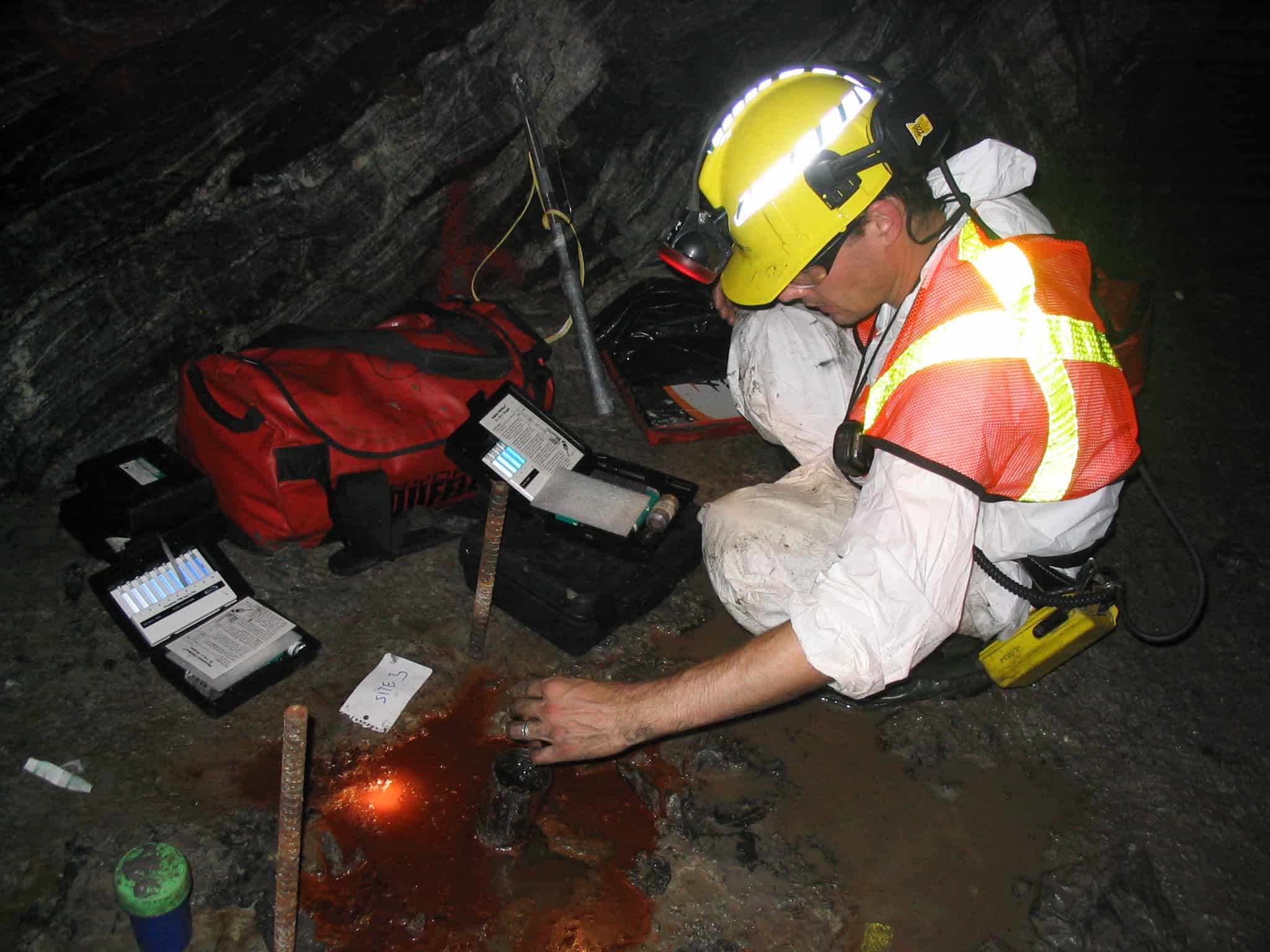Most living things derive their energy from sunlight. Plants use light energy to convert carbon dioxide into organic compounds, which in turn fuel animals and detritivores. For the microbial communities living 2.4 kilometres below the Earth’s surface, however, sunlight is not an option.
Barbara Sherwood Lollar, Professor in the Department of Earth Sciences at U of T, explained, “Many of the subsurface microbial communities are chemolithotrophs, deriving their energy for life from the chemistry of water-rock reactions in the deep, dark parts of the earth — rather than basing their energy on photosynthesis as surface life does.”
Isolated from the Earth’s surface, these microbial communities rely on chemical reactions — specifically, the oxidation of hydrogen and the reduction of sulphate — to generate energy. In this redox reaction, hydrogen ‘donates’ electrons and sulphate ‘accepts’ them. While hydrogen is probably produced from the breakdown of water molecules by ionizing radiation, the question of the source of sulphate is unresolved.
“[Studying these microbial communities] expands our understanding of the range of metabolic strategies life can use to sustain itself on this planet,” said Sherwood Lollar.
To identify the source of sulphate, Sherwood Lollar and her team studied the groundwater at the Kidd Mine in Timmins, Ontario, the deepest metal mine in the world. The groundwater harbours some of the highest levels of radiogenic helium, neon, and argon recorded so far, which indicates that these waters have been isolated from the surface for billions of years.
Following the completion of borehole drilling, they sampled water flowing from the boreholes for over 60 months. Working with researchers at McGill University, they analyzed the different sulphur isotopes — sulphur atoms that differ in the number of neutrons — in the water.
After accounting for competing explanations, they concluded that the dissolved sulphate is derived from sulphide minerals, namely pyrite, in the surrounding Canadian Shield rocks. In particular, the dissolved sulphate and the 2.7 billion-year-old rocks share similar isotopic signatures.
There is, however, one important difference. Compared with the host rock, the dissolved sulphate is enriched in the isotope sulphur-34. While sulphur-34 can arise from both biological and chemical processes, the evidence in this case points to the work of microbes.
Their findings have important implications for planetary habitability. “Our study shows that water-rock reactions in ancient rocks that are billions of years old can continue to produce the electron donors and electron acceptors subsurface microbial communities can use to sustain themselves (in this case the hydrogen and sulphate that sulphate-reducing bacteria rely on),” explained Sherwood Lollar. “If this can work on ancient rocks on Earth, then similar processes could make the Martian subsurface habitable.”
Whether there is life on Mars is a separate issue altogether.
The study was published in Nature Communications on October 27. First author Long Li, who was a post-doctoral fellow under Sherwood Lollar, is now the Canada Research Chair in stable isotope geochemistry at the University of Alberta.
There are still many questions to be answered. “We still need to determine what the distribution of ancient waters are on the Earth, what the ages of this deep hydrogeosphere are, how many are inhabited, and how any life we might find in those isolated waters is the same or different from other microbial life found for instance at the hydrothermal vents on the ocean floors,” said Sherwood Lollar.
There is still a lot of work to be done, but one thing is certain: there is tremendous diversity in the strategies used to sustain life and we have only just scratched the surface.


